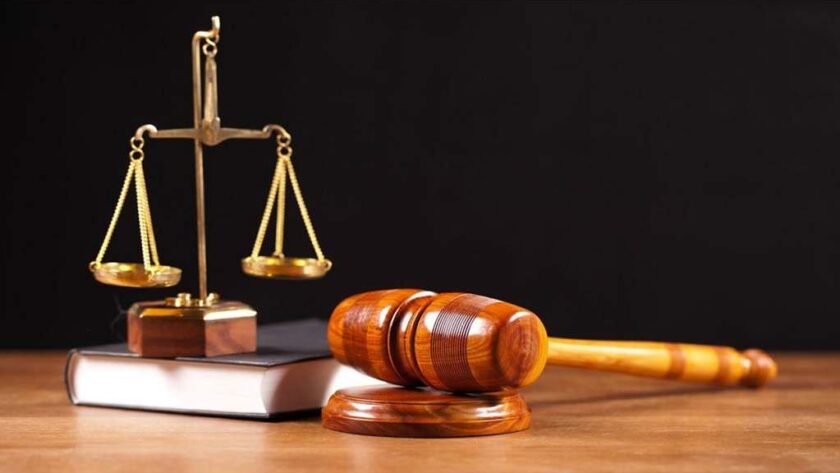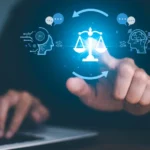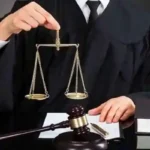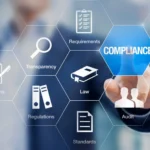The legal system is the backbone of society, ensuring that laws are applied fairly and justice is upheld. From the protection of rights to the resolution of disputes, the legal system plays a crucial role in maintaining order and ensuring that individuals and organizations act within the framework established by law. However, for many people, understanding how the legal system works can seem complex, with its various courts, processes, and legal principles.
This guide aims to provide a clear and concise understanding of the legal system, explaining its structure, processes, and the key concepts involved. Whether you’re a law student, a person facing legal issues, or simply someone curious about how the law operates, this article will give you a foundational understanding of law and justice.
1. The Foundation of Law: What Is Law?
At its core, law is a system of rules created and enforced by institutions (such as governments, courts, or legislatures) to regulate behavior and maintain social order. Laws are intended to protect individuals’ rights, prevent harm, provide justice, and resolve disputes. They are often categorized into several broad areas:
1.1 Types of Law
Laws are divided into two main categories: public law and private law.
- Public Law: Deals with the relationships between individuals and the state or government. It includes:
- Criminal Law: Addresses actions that are harmful to society as a whole (e.g., theft, assault, murder). In criminal law, the state prosecutes an individual accused of committing a crime.
- Constitutional Law: Deals with the interpretation of the constitution and the legal powers of government entities. It sets the framework for how laws are made and enforced.
- Administrative Law: Governs the activities of government agencies and their regulations.
- Private Law: Governs relationships between individuals or private entities. It includes:
- Contract Law: Regulates agreements and contracts between parties, ensuring that obligations are met.
- Tort Law: Deals with civil wrongs (e.g., personal injury or defamation) that cause harm to individuals.
- Family Law: Addresses legal issues related to marriage, divorce, child custody, and adoption.
- Property Law: Concerns the ownership and use of property (land, goods, etc.).
1.2 The Purpose of Law
The law serves several key purposes:
- Maintaining Order: Laws help to maintain peace by establishing rules that prevent individuals from harming others.
- Protecting Individual Rights: Laws protect the fundamental rights of citizens, such as freedom of speech, the right to a fair trial, and the right to privacy.
- Providing Justice: Law ensures that disputes are resolved fairly through an impartial judicial process, where individuals are held accountable for their actions.
- Resolving Disputes: The legal system provides mechanisms for resolving conflicts between individuals, organizations, or between individuals and the state.
2. The Structure of the Legal System
The legal system is structured in a way that ensures the fair application of law across different levels of government and types of cases. This system is designed to manage everything from minor disputes to major criminal trials, ensuring that all cases are handled in a manner consistent with legal principles.
2.1 The Court System
The court system is where legal disputes are settled. Courts are divided into several levels based on the severity of the case and the type of law being applied.
- Trial Courts: These are the first courts to hear a case and make a ruling. They are where evidence is presented, witnesses testify, and the facts of the case are established. Most criminal and civil cases begin in trial courts.
- Appellate Courts: If a party is dissatisfied with a ruling in a trial court, they can appeal to a higher court. Appellate courts review the trial court’s decision to determine whether there were legal errors that may have affected the outcome. They do not hear new evidence but instead focus on legal arguments.
- Supreme Court: The highest court in a country or jurisdiction, typically handling appeals from appellate courts and making decisions on constitutional matters or cases of great public importance.
2.2 The Roles of Judges and Lawyers
- Judges: Judges are responsible for overseeing legal proceedings in court. They ensure that the trial is conducted fairly, apply the law to the facts of the case, and issue rulings or verdicts. In criminal cases, judges may also determine the appropriate punishment or sentence for a convicted defendant.
- Lawyers (Attorneys): Lawyers represent clients in legal matters and act as advocates for their interests. There are two main types of lawyers:
- Criminal Defense Attorneys: Represent individuals accused of crimes and work to defend their clients’ rights and interests.
- Civil Attorneys: Represent individuals or organizations involved in non-criminal legal disputes, such as contract disputes or personal injury cases.
Lawyers are essential in navigating the complexities of the legal system and ensuring that their clients’ rights are protected.
3. The Legal Process: How Cases Move Through the System
The legal process may seem intimidating, but it follows a structured pathway. Although the specific steps may vary depending on the type of case and jurisdiction, the general legal process includes the following stages:
3.1 Filing a Case
In most cases, the legal process begins when an individual or entity files a lawsuit or complaint. In criminal cases, law enforcement typically initiates the process by investigating a crime and filing charges against the alleged perpetrator.
- Civil Cases: The party initiating the case (plaintiff) files a complaint against another party (defendant) in a civil court. This complaint outlines the plaintiff’s claims and the legal grounds for seeking relief (e.g., compensation for damages).
- Criminal Cases: In criminal cases, the government (prosecution) charges an individual with a crime. The defendant (accused) has the right to be represented by a defense attorney.
3.2 Pretrial Procedures
Before the trial, the parties involved in the case may engage in a variety of pretrial activities, such as:
- Discovery: Both sides exchange information and evidence that may be used in court, helping to clarify the issues involved in the case.
- Motions: Either side may file motions asking the court to make specific rulings, such as dismissing the case or excluding certain evidence.
- Settlement Negotiations: In civil cases, the parties may try to reach an out-of-court settlement through negotiation or alternative dispute resolution methods such as mediation or arbitration.
3.3 The Trial
The trial is the formal process in which both sides present their case to a judge or jury. It typically involves:
- Opening Statements: Each side introduces its case to the judge or jury, outlining what they intend to prove.
- Presentation of Evidence: Both sides present evidence (documents, testimony, etc.) to support their claims.
- Closing Arguments: After all evidence has been presented, each side summarizes the case, arguing why the judge or jury should rule in their favor.
In criminal cases, the prosecution has the burden of proving the defendant’s guilt beyond a reasonable doubt. In civil cases, the burden of proof is typically “preponderance of the evidence,” meaning that one side’s argument must be more convincing than the other’s.
3.4 Verdict and Sentencing
After the trial, the judge or jury delivers a verdict:
- Guilty or Not Guilty: In criminal cases, the jury or judge decides whether the defendant is guilty of the crime they were charged with. If guilty, the judge will determine the sentence, which may include fines, probation, or imprisonment.
- Liability or No Liability: In civil cases, the judge or jury determines whether the defendant is liable for the plaintiff’s claims. If the defendant is found liable, the court will decide what damages or compensation the defendant must pay.
4. Justice: The Goal of the Legal System
The ultimate goal of the legal system is to administer justice. Justice is the fair and impartial application of the law to ensure that everyone, regardless of their background, is treated equally and that disputes are resolved in a manner consistent with the principles of fairness.
4.1 Legal Rights and Protections
The legal system is designed to safeguard the rights of individuals. Some fundamental legal rights include:
- Due Process: The right to fair treatment and legal procedures, especially in criminal cases.
- Equal Protection: The right to be treated equally before the law, regardless of race, gender, or other characteristics.
- Right to Counsel: The right to be represented by an attorney in criminal cases.
4.2 The Role of Courts in Achieving Justice
Courts play a critical role in ensuring justice by resolving disputes impartially and interpreting the law. The judiciary is an independent body, separate from the legislative and executive branches of government, which ensures that it can make decisions without political influence.
5. Challenges in the Legal System
While the legal system is designed to serve justice, it faces several challenges:
- Access to Justice: Not everyone can afford legal representation, and this can prevent some individuals from effectively navigating the legal system.
- Delays in the Court System: Some legal cases, especially in high-volume courts, may take years to resolve due to backlogs and delays.
- Bias and Inequality: There are ongoing concerns about racial, gender, and socioeconomic bias in the legal system, which can affect outcomes.
6. Conclusion
Understanding the legal system is essential for recognizing how laws shape society and how justice is administered. The legal system is designed to ensure that individuals are treated fairly and that disputes are resolved in accordance with the law. While it can be complex, the fundamental principles of law, such as fairness, due process, and equality, guide its operation and provide a framework for addressing societal issues. Whether you’re facing a legal issue or simply trying to understand the rules that govern society, having a basic understanding of how the legal system works is crucial in navigating the world around you.




